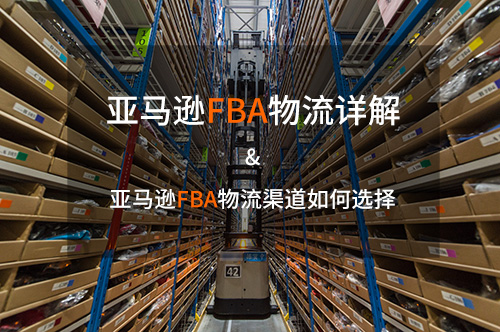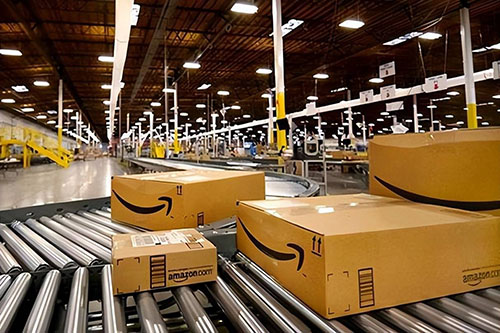Amazon SEND/ShipTrack Carrier,Amazon SPN/Temu/Tiktok/Wayfair/Walmart Partner
Amazon FBA logistics is a warehousing and distribution service provided by Amazon. Sellers send goods to Amazon warehouses, and Amazon is responsible for subsequent storage, packaging, distribution, customer service and return processing, which greatly improves logistics efficiency and customer experience. When choosing Amazon FBA logistics channels, you need to consider the characteristics of the goods, market demand, cost budget and timeliness requirements. Through reasonable selection, you can optimize logistics costs and improve market competitiveness.
Amazon FBA Logistics Detailed Explanation
一、Introduction to Amazon FBA and FBM
1. What is FBA?
Amazon FBA (full name: Fulfillment by Amazon) means that sellers send goods in batches to Amazon's operation center, and Amazon is responsible for storing the goods. When the goods are sold, Amazon is responsible for order sorting, packaging, and delivery, and provides customer service such as buyer consultation and returns. This logistics model helps sellers save manpower, material and financial resources.
2. What is FBM?
FBM (full name: Fulfillment by Merchant) means that sellers only use Amazon as a sales platform, and use third-party logistics companies such as FedEx, UPS, and postal parcel direct delivery to deliver goods to buyers, or send products to third-party overseas warehouses, and the overseas warehouses complete the delivery service. As long as Amazon is not officially involved in the logistics process, it can be called FBM.
3. The difference between FBA and FBM

(1)Different delivery methods : FBA is responsible for the entire logistics final delivery process by Amazon, while FBM allows sellers to choose logistics carriers on their own.
(2)Different delivery times: FBA usually has a faster delivery time because the goods are stored in the local Amazon warehouse center and can be delivered to the buyer quickly (good user shopping experience). FBM, on the other hand, involves cross-border transportation and has a relatively slow delivery time (for example, it may take 10 days or half a month to send goods directly from China to the buyer, which is not as good as FBA).
(3)Different investment costs: FBA requires sellers to send goods to Amazon warehouses in advance and pay storage fees, order processing fees, etc., which has a high investment cost. FBM does not require a large amount of inventory and has a lower investment cost.
(4)Different control rights: Under the FBA model, sellers have weak control over logistics and after-sales links such as packaging, delivery, and returns after placing an order, while under the FBM model, sellers can fully control business processes such as inventory, delivery, and after-sales returns.
(5)Different suitable products: FBA is more suitable for small, cheap, and unsalable goods. FBM is more suitable for personalized customized products, large-volume goods, and unsalable goods. For example, for products such as furniture and home furnishings that require relatively high storage and logistics, some sellers have the FBM model for overseas warehouse delivery.
(6)Conclusion: Whether to choose FBA or FBM depends on the seller's financial situation, risk resistance, product characteristics, and market demand. Currently, more sellers choose the FBA model because they can get better customer experience and more traffic.
二、Amazon FBA operation mode
1.Distribution mode: Sellers upload various products in large quantities on the Amazon platform. It is suitable for novice sellers who do not have their own factories, are not clear about the store positioning, have insufficient product selection ability, and want to quickly place orders. It is mainly aimed at a large number of distribution in several categories or a certain category.
2.Fine distribution mode: Sellers are more cautious and meticulous in selecting products. By collecting and analyzing the data and characteristics of popular products, they select products with high profit stability and market potential for centralized promotion and sales. This model of sellers has a certain understanding of this sub-category and is suitable for small and medium-sized sellers.
3.Boutique mode: Also known as "hitting the hot item", sellers carefully polish and plan multiple products in the early stage of store operation, gradually determine and focus on certain specific products with greater market potential and high profit margins, and attract consumers through brand building and marketing activities. Generally, powerful medium and large sellers or supply chain companies integrating industry and trade do this model. In each sub-category, they are either bestsellers or the top few at the top of the first page.
4.Fine and refined: There is no clear division between fine and refined. This type is for senior sellers who have reached a certain stage of fine and refined distribution, are very familiar with the category, and are confident of moving up the bestsellers list. For example, in a small category with not too large sales volume, the ranking can be pushed to within 50, or in a more popular category, the ranking can be pushed to around 100 and can be maintained. Usually, 30-50 orders can be placed stably every day, or the average customer price is slightly lower, and the order volume is more than 100 orders.
三、What is the first mile of Amazon FBA logistics?
The first mile of Amazon FBA logistics refers to the process of transporting goods from China and other places of shipment to Amazon's operation center. This process includes transportation, customs clearance, warehousing appointment and other links.
四、What are the transportation methods for the first mile of Amazon FBA logistics?
1.Express:such as DHL, UPS, FedEx, etc., which are fast and suitable for emergency replenishment, but the price is the highest. The fastest time is 3-7 days, the price is 50-90, and the price varies greatly depending on the off-season and peak season.
2.Air Shipping:
Air-express delivery:A transportation method in the form of air transportation plus terminal express delivery, with a faster overall logistics time. The time is about 7-15 days, and the price ranges from 30-60. The direct flight is faster and the transfer flight is slower. The price is lower.
Air-trucking delivery:After air transportation to the destination country, trucks are used for terminal delivery, which is slightly lower than air delivery. The price ranges from 30-40, and the minimum amount is usually higher, such as more than 300 kilograms.
3.Ocean Freight:

1.Fast ship:
The faster shipping method has a higher price. For example:
Matson Express can deliver goods in 13 days, comparable to air freight, 8-12 yuan per kilogram;
ZEX Express with a frame can deliver goods in 20 days, starting at about 5-7 yuan;
EMC/COSCO delivers goods in 23-25 days, starting at about 5-7 yuan;
2.OA ship:Ordinary sea freight takes longer but is cheaper. It takes 28-32 days to enter the warehouse, and the price starts from about 4-6 yuan
3.LCL-express delivery:A mode of transportation that combines sea freight and terminal express delivery. The time limit varies according to different shipping companies. It is slightly more expensive than sea trucks and covers a wider area.
4.LCL-trucking delivery:After being shipped by sea to the destination country, trucks are used for final delivery, which has a slightly lower cost than sea delivery.
5.Railway delivery:Railway transportation is suitable for long-distance and large-volume cargo transportation, but its timeliness is relatively slow. For example: China-Europe Railway/Train
6.Trucking delivery:Using trucks for cross-border transportation is suitable for goods with short distances and high timeliness requirements.
五、How to choose Amazon FBA logistics channels
1.Air-express delivery is suitable: When you need to replenish stocks quickly and have a certain tolerance for costs, you can choose air delivery. Air delivery has a faster timeliness and can quickly meet market demand. For example, small and light commodities: accessories, Bluetooth headsets, etc.
2.Matson Express Tax-inclusive Sea Truck is suitable: When the weight or volume of the goods is large and you want to control costs, you can choose Mason Express Tax-inclusive Sea Truck. This method is cost-effective and suitable for relatively urgent replenishment.
3.EMC/COSCO Express Sea Truck Double Clearance Tax-inclusive is suitable: Similar to Matson Express, EMC/COSCO Express Sea Truck Double Clearance Tax-inclusive is also a cost-effective transportation method. It is suitable for sellers who do not have particularly high requirements for timeliness but want to control costs.
4.Special slow ship is suitable: When the goods are not in a hurry to be delivered and you want to further reduce costs, you can choose a special slow ship. Although the timeliness is longer, the price is relatively low, which is suitable for sellers of large goods.
Amazon FBA logistics provides strong back-end support for e-commerce sellers with its efficient and convenient services. When choosing Amazon FBA logistics channels, it is necessary to comprehensively consider the characteristics of the goods, market demand, cost budget and timeliness requirements. Through reasonable selection, logistics costs can be optimized and market competitiveness can be improved. As a leader in the industry, Niuku Int'l Logistics provides sellers using FBA with more flexible and efficient logistics solutions with its rich logistics channel resources, professional operation team and high-quality service quality. Whether it is sea, air or car, Niuku Int'l Logistics can tailor the most suitable logistics solution according to the specific needs of sellers, helping sellers achieve greater success on the Amazon platform.

WeChat Easy Scan
Online Consultation Easy Ordering